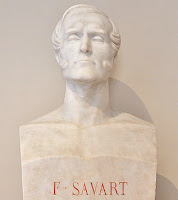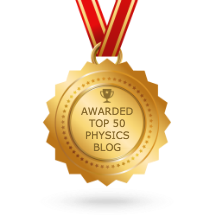Over the last couple years, I’ve been writing lots of review articles. In the last few weeks three have been published. All of them are open access, so you can read them without a subscription.
Can MRI be Used as a Sensor to Record Neural Activity?
 |
| “Can MRI be Used as a Sensor to Record Neural Activity?” |
Magnetic resonance provides exquisite anatomical images and functional MRI monitors physiological activity by recording blood oxygenation. This review attempts to answer the following question: Can MRI be used as a sensor to directly record neural behavior? It considers MRI sensing of electrical activity in the heart and in peripheral nerves before turning to the central topic: recording of brain activity. The primary hypothesis is that bioelectric current produced by a nerve or muscle creates a magnetic field that influences the magnetic resonance signal, although other mechanisms for detection are also considered. Recent studies have provided evidence that using MRI to sense neural activity is possible under ideal conditions. Whether it can be used routinely to provide functional information about brain processes in people remains an open question. The review concludes with a survey of artificial intelligence techniques that have been applied to functional MRI and may be appropriate for MRI sensing of neural activity.
Parts of the review may be familiar to readers of this blog. For instance, in June of 2016 I wrote about Yoshio Okada’s experiment to measure neural activation in a brain cerebellum of a turtle, in August 2019 I described Allen Song’s use of spin-lock methods to record brain activity, and in April 2020 I discussed J. H. Nagel’s 1984 abstract that may have been the first to report using MRI to image action currents. All these topics are featured in my review article. In addition, I analyzed my calculation, performed with graduate student Dan Xu, of the magnetic field produced inside the heart, and I reviewed my work with friend and colleague Ranjith Wijesinghe, from Ball State University, on MRI detection of bioelectrical activity in the brain and peripheral nerves. At the end of the review, I examined the use of artificial intelligence to interpret this type of MRI data. I don’t really know much about artificial intelligence, but the journal wanted me to address this topic so I did. With AI making so much news these days (ChatGPT was recently on the cover of TIME magazine!), I’m glad I included it.
Readers of Intermediate Physics for Medicine and Biology will find this review to be a useful extension of Section 18.12 (“Functional MRI”), especially the last paragraph of that section beginning with “Much recent research has focused on using MRI to image neural activity directly, rather than through changes in blood flow...”
Magneto-Acoustic Imaging in Biology
 |
| “Magneto-Acoustic Imaging in Biology” |
This review examines the use of magneto-acoustic methods to measure electrical conductivity. It focuses on two techniques developed in the last two decades: Magneto-Acoustic Tomography with Magnetic Induction (MAT-MI) and Magneto-Acousto-Electrical Tomography (MAET). These developments have the potential to change the way medical doctors image biological tissue.The only place in IPMB where Russ Hobbie and I talked about these topics is in Homework Problem 31 in Chapter 8, which analyzes a simple example of MAT-MI.
A Mathematical Model of Mechanotransduction
 |
| “A Mathematical Model of Mechanotransduction” |
This article reviews the mechanical bidomain model, a mathematical description of how the extracellular matrix and intracellular cytoskeleton of cardiac tissue are coupled by integrin membrane proteins. The fundamental hypothesis is that the difference between the intracellular and extracellular displacements drives mechanotransduction. A one-dimensional example illustrates the model, which is then extended to two or three dimensions. In a few cases, the bidomain equations can be solved analytically, demonstrating how tissue motion can be divided into two parts: monodomain displacements that are the same in both spaces and therefore do not contribute to mechanotransduction, and bidomain displacements that cause mechanotransduction. The model contains a length constant that depends on the intracellular and extracellular shear moduli and the integrin spring constant. Bidomain effects often occur within a few length constants of the tissue edge. Unequal anisotropy ratios in the intra- and extracellular spaces can modulate mechanotransduction. Insight into model predictions is supplied by simple analytical examples, such as the shearing of a slab of cardiac tissue or the contraction of a tissue sheet. Computational methods for solving the model equations are described, and precursors to the model are reviewed. Potential applications are discussed, such as predicting growth and remodeling in the diseased heart, analyzing stretch-induced arrhythmias, modeling shear forces in a vessel caused by blood flow, examining the role of mechanical forces in engineered sheets of tissue, studying differentiation in colonies of stem cells, and characterizing the response to localized forces applied to nanoparticles.
This review is similar to my article that I discussed in a blog post about a year ago, but better. I originally published it as a manuscript on the bioRxiv, the preprint server for biology, but it received little attention. I hope this version does better. If you want to read this article, download the pdf instead of reading it online. The equations are all messed up on the journal website, but they look fine in the file.
If you put these three reviews together with my previous ones about magnetic stimulation and the bidomain model of cardiac electrophysiology, you have a pretty good summary of the topics I’ve worked on throughout my career. Are there more reviews coming? I’m working feverishly to finish one more. For now, I’ll let you guess the topic. I hope it’ll come out later this year.













